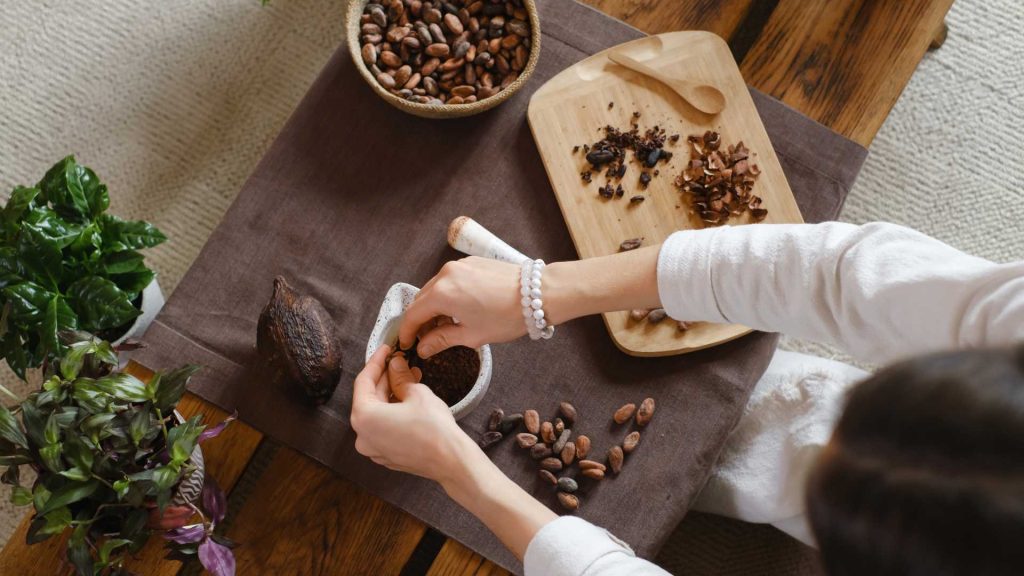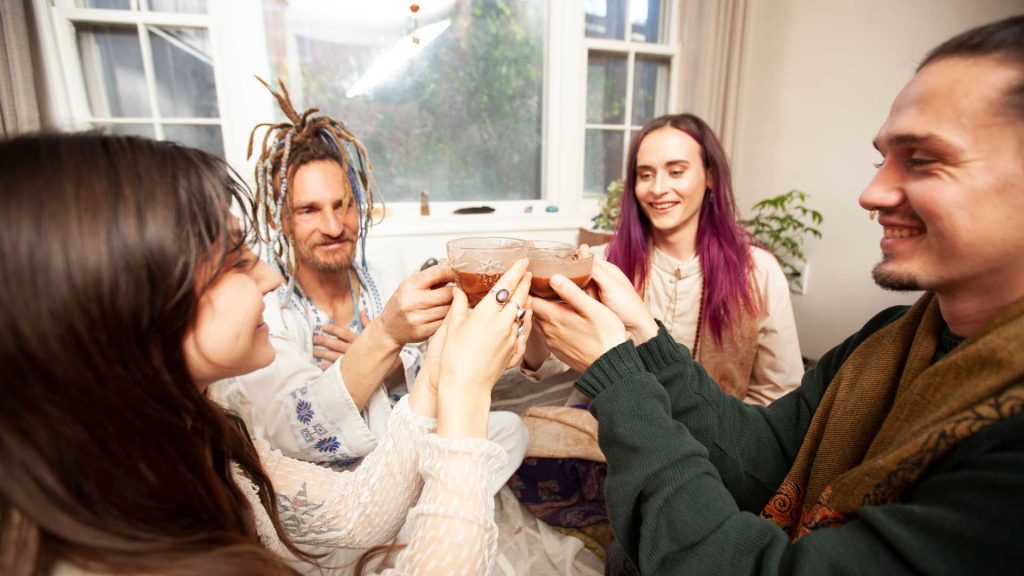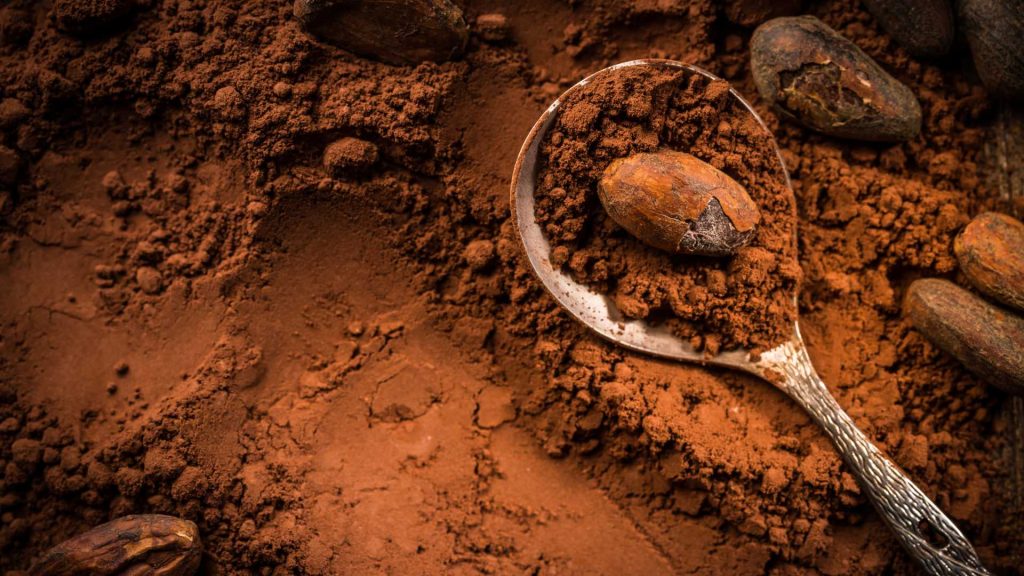Ceremonial cacao is an ancient and sacred tradition with roots in the indigenous cultures of Central and South America. It is a practice that goes beyond the mere consumption of chocolate as a sweet treat; it is a profound spiritual experience that connects participants with the earth, the divine, and their inner selves. This article delves into the essence of ceremonial cacao, exploring its origins, significance, and the unique experience it offers in modern spiritual practices.
Summary
Ceremonial cacao is rooted in ancient Central and South American traditions, particularly among the Mayan and Aztec civilisations, where it was revered as a sacred plant with deep spiritual significance. The preparation and consumption of cacao were integral to rituals, symbolising the connection between the physical and spiritual worlds. In modern times, cacao ceremonies have been revived as a spiritual practice, emphasising emotional release, self-awareness, spiritual growth, community building, and collective healing. These ceremonies are conducted in a supportive, non-judgmental environment, facilitating introspection, heart-opening experiences, and personal transformation. The modern adaptation of these rituals continues to honour the ancient traditions while making them accessible and relevant to contemporary spiritual seekers.
The Origins Of Ceremonial Cacao
1. Historical Background
- Mayan and Aztec Reverence: The Mayan and Aztec civilisations, known for their advanced knowledge and deep spiritual practices, considered cacao a sacred plant. The cacao tree, known as Theobroma cacao, meaning "food of the gods," was seen as a divine gift that bridged the human and spiritual realms.
- Mythological Significance: In Mayan mythology, the cacao tree was believed to connect the heavens, earth, and the underworld. It was not just a plant but a symbol of life, fertility, and divine connection. Similarly, the Aztecs associated cacao with the goddess of fertility, Xochiquetzal, and used it in rituals to empower warriors before battle.
- Cultural Practices: Cacao was integral to significant life events, including births, marriages, and funerals. The beans were used as offerings to gods and were highly valued, even serving as a form of currency in Aztec society.
2. Preparation And Rituals

- Traditional Preparation: The process of preparing ceremonial cacao was itself a sacred act. The beans were carefully fermented, dried, and ground into a paste. This paste was mixed with water, spices like chilli and cinnamon, and sometimes honey to create a frothy, bitter beverage. This drink was consumed during rituals, not only as nourishment but as a medium to communicate with the divine.
- Role of Priests: In these ancient cultures, priests were crucial in preparing and serving cacao. They ensured the rituals were performed with the utmost respect, honouring the cacao's spiritual significance.
- Symbolism in Ceremonies: Cacao was used in ceremonies to symbolise the connection between the physical and spiritual worlds. It was a means to open the heart, connect with ancestors, and seek guidance from the gods.
The Spiritual Significance Of Ceremonial Cacao
1. Creating The Elixir
The process of creating the cacao elixir involves not only physical ingredients but also a deep infusion of spiritual intention. The journey begins with carefully selecting cacao beans, which are then roasted to perfection. Once roasted, the beans are ground into a rich, aromatic paste. This paste is mixed with water and an array of spices, each chosen for its unique energetic properties. The result is a beverage that transcends mere physical nourishment; it becomes a vessel for spiritual exploration and connection. The intention in every step of the preparation process ensures that the cacao elixir is a potent medium for spiritual experiences.
2. Mindful Consumption
During a cacao ceremony, the act of drinking the elixir is performed with mindfulness and reverence. Participants are encouraged to fully engage their senses, focusing on the cacao's taste, texture, and energy. This mindful approach allows individuals to enter a state of introspection and spiritual communion. By savouring each sip, participants can connect more deeply with the cacao spirit, allowing it to guide their thoughts and emotions towards inner exploration and spiritual growth.
3. Heart-Opening Properties
One of the most celebrated aspects of ceremonial cacao is its heart-opening properties. Theobromine, a natural compound found in cacao, stimulates blood flow and induces a sense of warmth and well-being. This physiological effect creates an ideal state for spiritual experiences, as it enhances emotional openness and vulnerability. Participants often feel a profound connection with their inner selves and others, facilitated by theobromine's gentle yet powerful effects. The heart-opening properties of cacao help to break down emotional barriers, fostering a deeper sense of empathy and compassion.
4. Facilitating Spiritual Journeys
Ceremonial cacao is often called a "plant medicine" due to its ability to facilitate profound spiritual journeys. When consumed in a ceremonial context, cacao can open pathways to higher states of consciousness. Participants may experience visions, receive insights, or feel deep peace and connection with the divine. The cacao acts as a gentle guide, helping individuals navigate their inner landscapes and access deeper layers of their psyche. This facilitation of spiritual journeys is one of the core reasons why cacao is revered in many spiritual traditions.
5. Guided Meditations
In modern cacao ceremonies, guided meditations enhance the spiritual experience. Facilitators lead participants through meditative practices designed to connect them with the cacao spirit and their inner worlds. These guided meditations can lead to profound spiritual experiences and personal revelations. By creating a structured yet flexible framework for introspection, guided meditations help participants unlock new insights and deepen their understanding of themselves and the universe.
6. Healing And Transformation
The spiritual properties of ceremonial cacao make it a powerful tool for healing and transformation. During a cacao ceremony, participants often release emotional blockages and gain clarity on life issues. The supportive environment of the ceremony, combined with the heart-opening effects of cacao, allows individuals to confront and process deep-seated emotions. This emotional release and spiritual exploration process can lead to a profound sense of renewal and empowerment. Participants frequently report feeling a newfound sense of purpose and direction and a deeper connection to their true selves.
The Modern Revival Of Cacao Ceremonies
1. Adapting Ancient Practices
- Cultural Evolution: While the roots of cacao ceremonies lie in ancient traditions, these practices have evolved to fit the needs of modern spiritual seekers. Today, cacao ceremonies are conducted worldwide, blending traditional elements with contemporary spiritual practices.
- Diverse Participants: Modern cacao ceremonies attract participants from different cultural backgrounds. They provide a space for people to connect with ancient wisdom regardless of their spiritual beliefs.
- Inclusive Rituals: Today's cacao ceremonies are designed to be inclusive, allowing participants to experience the spiritual benefits of cacao in a way that resonates with them. The rituals may include chanting, dancing, or creative expression to enhance the spiritual experience.
2. Structure Of Modern Ceremonies
- Circle Gatherings: Participants typically gather in a circle, symbolising unity and equality. The circle is a sacred space where everyone is encouraged to share their intentions, experiences, and insights.
- Setting Intentions: A key component of a cacao ceremony is setting intentions. Participants must focus on what they wish to achieve or explore during the ceremony. This intentional focus helps to direct the energy of the cacao and the collective group.
- Guided Activities: The ceremony may include guided meditations, movement exercises, or artistic activities. These practices help participants to connect more deeply with the cacao and their inner selves.
- Sharing and Reflection: After consuming the cacao and engaging in the ceremony's activities, participants often share their experiences in a group setting. This sharing fosters community and allows for collective healing and transformation.
The Benefits Of Participating In Cacao Ceremonies
1. Emotional Release
Cacao ceremonies create a sacred and safe environment that encourages participants to open up emotionally. The warmth and nurturing atmosphere often allow individuals to access and release emotions that may have been suppressed or unrecognised. This can manifest as crying, vocalising feelings, or experiencing a deep sense of relief as emotional burdens are lifted. The ceremony provides a container where participants can explore their emotions without fear of judgment, facilitating a cathartic release that contributes to emotional healing.
2. Increased Self-Awareness
Engaging in a cacao ceremony invites deep introspection, guiding participants on a journey within themselves. The ceremonial use of cacao, combined with meditation and guided practices, often enhances one's ability to reflect on their life experiences. Participants may uncover new perspectives on their life paths, gain clarity on challenging situations, and better understand their inner world. This increased self-awareness can lead to more mindful living as individuals become more attuned to their thoughts, feelings, and actions.
3. Spiritual Growth
Cacao ceremonies are deeply rooted in spiritual tradition, allowing participants to explore and deepen their connection to the spiritual realm. Whether one identifies with a specific spiritual path or is simply open to the experience, the ceremony can be a powerful catalyst for spiritual awakening and growth. The meditative state induced by cacao, along with the ceremonial aspects of the ceremony, can help participants feel more aligned with their higher selves, experience a stronger sense of purpose, and foster a profound connection to the divine or universal energy.

4. Building Bonds
One of the unique aspects of cacao ceremonies is the emphasis on community and shared experience. While the ceremony is deeply personal, it is also communal, bringing together individuals on similar spiritual journeys. This shared experience often leads to the formation of meaningful connections and a sense of belonging among participants. The group's collective energy enhances each individual's experience, fostering bonds beyond the ceremony itself. Participants often leave with a sense of kinship, feeling supported and connected to others who understand and share in their spiritual exploration.
5. Collective Healing
The energy generated in a cacao ceremony is not just personal but collective. As individuals open their hearts, share their stories, and release their emotions, a powerful collective healing energy is created. This shared experience can amplify the healing process for each participant, as the group's collective intention and energy work synergistically to support everyone's healing. The ceremony becomes a space where individuals can contribute to and benefit from the collective healing process, creating a ripple effect that extends into their lives outside the ceremony.
6. Supportive Environment
Cacao ceremonies are intentionally designed to be nurturing and non-judgmental. Facilitators create a space where participants can explore their emotions, thoughts, and spiritual experiences without fear of criticism or rejection. This supportive environment encourages openness and authenticity, fully immersing participants in the ceremony. The sense of safety and support fosters trust, enabling deeper emotional and spiritual work. Participants often leave the ceremony feeling validated, supported, and empowered to continue their personal and spiritual growth.
Conclusion
Ceremonial cacao is a deeply spiritual practice with ancient roots in the indigenous cultures of Central and South America. It transcends the simple act of consuming chocolate, offering a profound connection to the earth, the divine, and one's inner self. The traditional preparation and mindful consumption of cacao, infused with spiritual intention, facilitate heart-opening experiences and spiritual journeys. Modern cacao ceremonies adapt these ancient practices to contemporary spiritual seekers, fostering emotional release, self-awareness, spiritual growth, and community bonding. Participating in cacao ceremonies provides a nurturing and supportive environment for collective healing and personal transformation.
Frequently Asked Questions
Ceremonial cacao is minimally processed and made from high-quality, heirloom cacao beans. It is prepared with specific rituals and intentions, whereas regular cacao is often processed and used for everyday consumption without spiritual significance.
Ceremonial cacao is typically made from roasted cacao beans ground into a paste, mixed with water, and often blended with spices like chilli, cinnamon, and honey. Each ingredient is chosen for its energetic properties and spiritual significance.
Theobromine, a natural compound found in cacao, stimulates blood flow and induces a sense of warmth and well-being. It enhances emotional openness and vulnerability, facilitating heart-opening experiences and deeper spiritual connections.
Yes, cacao ceremonies are inclusive and open to anyone interested in exploring their spiritual path. They provide a safe and nurturing space for individuals to connect with ancient wisdom and their inner selves, regardless of their spiritual beliefs.
Cacao ceremonies may include setting intentions, guided meditations, movement exercises, artistic activities, and sharing reflections. These activities help participants connect deeply with the cacao spirit and their inner selves.

